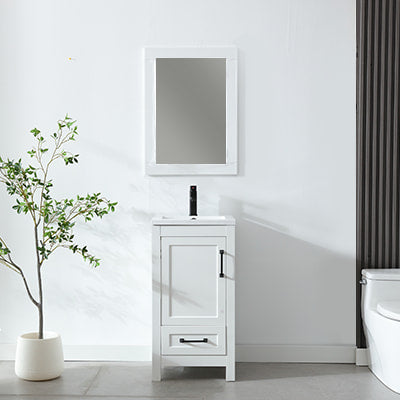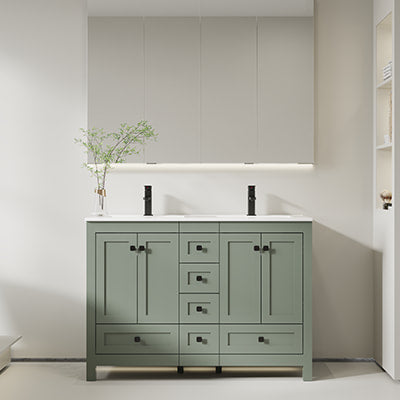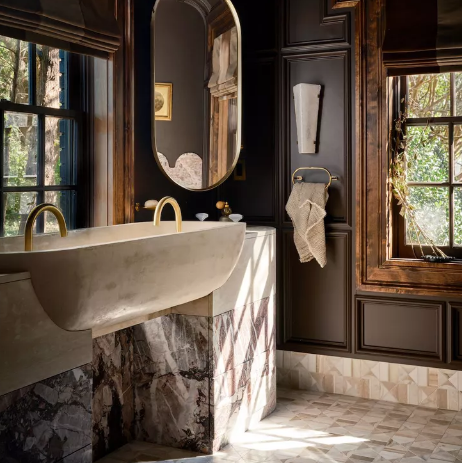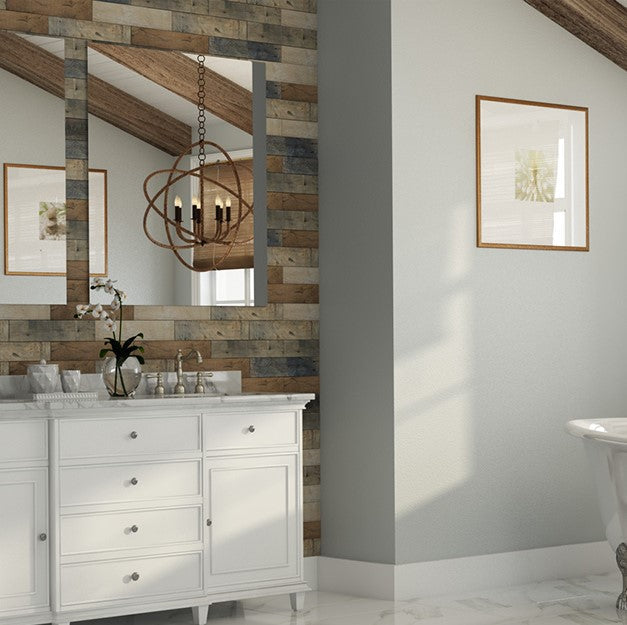Hinges: The "Invisible Skeleton" of Bathroom Cabinets
When purchasing bathroom cabinets, consumers often focus on materials, appearance, and price, but easily overlook the crucial hardware connecting the cabinet doors to the body – hinges (including stainless steel hinge, durable hinge, and rust-resistant hinge). As the "joints" of bathroom cabinets, hinges not only determine the smoothness of door operation but also directly affect product lifespan and safety. High-quality hinges can withstand tens of thousands of openings and closings while maintaining stable performance, while inferior hinges may loosen, rust, or break in a short period, causing doors to sag or fail to close properly. If you're looking for a complete solution, explore our selection of bathroom vanity cabinets designed with durable hardware and long-lasting materials.

🔍 Industry Research Data
According to statistics in "China Kitchen and Bathroom Hardware Quality White Paper"[1], approximately 38% of bathroom cabinet failures are directly related to corrosion-resistant hinge quality, making it one of the main reasons for premature product scrapping. In fact, issues with kitchen cabinet hinge components often manifest as early wear or breakage. High-quality hinges can extend bathroom cabinet service life by 3–5 years and reduce maintenance costs by over 60%.
Four-Step Hinge Quality Identification Method
🛡️ Material Identification
High-quality hinges are typically made of 304 anodized aluminum hinge or aerospace-grade aluminum alloy, with smooth surfaces free of burrs. Look for coatings rated as UV-resistant hinge treatments to prevent fading in humid environments. Initial judgment can be made through magnet testing (stainless steel is non-magnetic) and weight comparison (quality hinges of the same specification are heavier). Avoid zinc alloy materials, which easily oxidize and break.
⚙️ Structural Design
Check for three-dimensional adjustment capability (up-down, left-right, front-back). Many premium designs like adjustable hinge, full-overlay hinge, half-overlay hinge, and inset hinge offer enhanced flexibility. Also verify whether hinge arms have reinforcing rib design and if dampers are built-in and hidden. High-quality hinges should open to 110°–165° angles to meet different usage needs.
✋ Feel Test
Manual opening and closing should be smooth without resistance, with an obvious buffering effect when closing, and no "clanging" impact sound. True ball bearing hinge and friction hinge designs provide uniform resistance throughout operation, stable stopping positions, and no automatic rebounding or sagging.
🏭 Craftsmanship Details
Observe whether surface treatment is uniform, with no exposed substrate, bubbles, or scratches; whether screw holes are precise and accessories complete; whether gaps at connections are even. Look for finishes like satin finish hinge plating, built-in dampers for soft-close hinge (also known as quiet-close hinge), or damping hinge features. High-quality products often include brand logos and specification parameters clearly marked—and may advertise magnet-tested hinge performance to guarantee non-magnetic integrity.
Comparative Analysis of High-Quality vs. Inferior Hinges


📊 Industry Standard Requirements
QB/T 2189-2013 "Furniture Hinges" stipulates that qualified hinges should withstand 48-hour neutral salt spray testing and still function normally after 30,000 opening-closing cycles, with door sag not exceeding 2mm—a benchmark often met by heavy-duty hinge models.
🔄 Practical Usage Comparison
In household bathroom environments, high-quality hinges typically achieve a service life of 8–10 years, while inferior hinges often develop obvious faults within 1–2 years, such as loose screws, rusted pivot cores, and failed damping. Look for specialized heavy-load hinge constructions when installing larger or heavier doors.
Professional Purchasing Guide

🛒 On-Site Identification Techniques
Perform the "three-finger test": pinch the hinge arm with thumb, index, and middle fingers and shake firmly - high-quality hinges should have no obvious looseness
Open and close the cabinet door continuously 10 times, feeling for resistance changes - check especially for self-closing hinge mechanisms holding consistent tension
Check adjustment screw quality - high-quality hinges typically use hexagon socket or cruciform column anti-dismantling screws
Look for product certification marks, such as German DIN standards, American ANSI certification, or domestic QB/T marks
🏷️ Recommended Brands
Brands such as Hettich, Blum, Grasse, and DTC offer reliable premium hinge quality. It is recommended to choose products with brand guarantees.
📏 Specification Matching
Select appropriate specifications based on door weight: light-duty hinge for doors ≤ 5 kg, medium-duty hinge for 5 – 10 kg, and heavy-duty hinges with increased installation quantity for doors > 10 kg.
📑 Warranty Terms
High-quality hinges typically come with 3–5 year warranties. When purchasing, confirm whether the warranty covers both hinge quality issues and installation problems, and inquire about industrial hinge grade guarantees for commercial applications.
Conclusion: Details Determine Quality Experience
As core bathroom furniture, bathroom cabinet quality not only affects daily usage experience but also directly impacts home safety and renovation investment returns. Although small in size, hinges are critical details determining product quality. Through the four steps of material identification, structural analysis, feel testing, and craftsmanship inspection, consumers can accurately judge hinge quality when purchasing, avoiding the consumer trap of "beautiful appearance but shoddy interior."
In the context of rising material costs and homogenized product design, hardware details have become the true differentiator of bathroom cabinet quality. A set of fade-proof hinge components represents not just superior materials and craftsmanship, but also the manufacturer's attitude toward quality control and user experience. When making purchasing decisions, consumers should weigh the cost–effectiveness ratio—spending 10–15% more on high-quality hardware can reduce maintenance costs by 50% over the product lifecycle and significantly enhance daily comfort.
For industry professionals, establishing objective evaluation criteria for hinge quality is essential for promoting overall bathroom cabinet quality improvement. We recommend paying attention to not only visible indicators like material and appearance but also concealed performance metrics such as fatigue resistance, corrosion resistance, and adjustment precision. Only through comprehensive quality control of hardware components can the industry move toward more standardized and reliable product quality. Browse our full line of modern bathroom vanities engineered for durability, function, and aesthetic appeal in high-moisture environments.
The bathroom, as a high-humidity environment with frequent temperature changes, poses severe challenges to furniture durability. Choosing bathroom cabinets equipped with high-quality hinges is not just about product longevity, but about ensuring family safety and quality of life. When you gently open and close your bathroom cabinet door tomorrow, take a moment to appreciate the engineering sophistication in those small hinges—they represent the perfect combination of industrial design and daily life.
References
[1]China National Hardware Association, 2024





